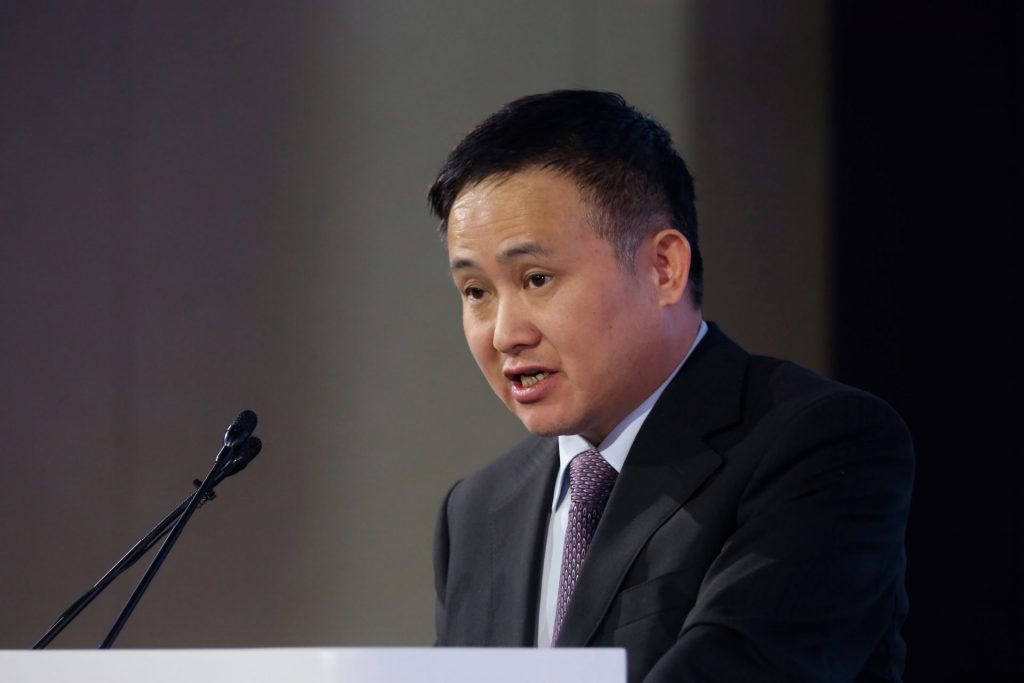US Dominates $3.7T Stablecoin Boom While China Struggles to Keep Pace
The US is racing ahead in the stablecoin revolution—now commanding a staggering $3.7 trillion market—while China plays catch-up. Here’s why it matters.
Stablecoins: America’s New Financial Weapon
The Fed’s hands-off approach has turbocharged USD-pegged stablecoins, turning them into the de facto bridge between crypto and traditional finance. Meanwhile, Beijing’s heavy-handed crypto bans left its own digital yuan playing second fiddle.
China’s Desperate Gambit
After years of cracking down, Chinese regulators are now scrambling to launch compliant stablecoins—but trust deficits and capital controls make this a steep uphill battle. Their ‘blockchain, no crypto’ mantra isn’t fooling anyone.
Wall Street Smirks, Main Street Adopts
While suits debate ‘systemic risks,’ real-world usage explodes—remittances, e-commerce, even payrolls now flow through stablecoins faster than SWIFT. The irony? Banks hate them until they need to settle trades at 3am.
The Bottom Line
This isn’t just about technology—it’s financial hegemony. The US accidentally built the rails for the next global monetary system while China was busy building firewalls. Game recognizes game.
China Stablecoin Adoption Faces Volatility, Regulation, And Payment Challenges

PBOC Officials Signal Interest Amid Geopolitical Tensions
People’s Bank of China Governor Pan Gongsheng made some pretty significant headlines back in June when he spoke about China’s potential approach to digital currencies. His comments directly addressed concerns about stablecoin market volatility and also touched on the opportunities that cross-border payments stablecoins might present for the country.
Pan Gongsheng said:
Former central bank governor Zhou Xiaochuan also weighed in at the same Shanghai event, and he warned that dollar-linked stablecoins could facilitate dollarization. Other officials from both mainland China and Hong Kong discussed the potential for yuan-based digital currencies and how they might support China’s long-running effort to promote its currency on the world stage, addressing both crypto regulatory uncertainty and yuan stablecoin adoption challenges.
US Senate Action Accelerates Competition
The US Senate’s passage of stablecoin legislation has really intensified the pressure on China to develop its own approach. Treasury Secretary Scott Bessent has been quite vocal about reinforcing America’s position on managing stablecoin market volatility and maintaining dominance in cross-border payments stablecoins.
Bessent said:
Most existing stablecoins are pegged to the dollar and backed by US assets like short-term Treasuries, with total supply projected to reach $3.7 trillion by 2030. This positioning presents significant challenges for China’s own stablecoin initiatives amid the ongoing crypto regulatory uncertainty.
Hong Kong Framework Drives Tech Interest

Hong Kong’s new regulatory framework for fiat-referenced stablecoins has sparked considerable interest from Chinese tech companies. JD.com and ANT Group are among the first major firms expected to apply for licenses, which could help address yuan stablecoin adoption challenges while ensuring compliance with digital currency regulation requirements.
JD.com has some pretty ambitious plans to cut costs for cross-border payments stablecoins by 90% and also reduce settlement times to under 10 seconds. Shanghai-listed Zhejiang China Commodities City Group has announced similar license-seeking plans as well.
Robin Xing, chief China economist at Morgan Stanley, stated:
Challenges and Future Outlook
The e-CNY, the state-sponsored digital monetary standard still does not have a lot of traction locally or internationally, despite the fact that there are hypothetical talks of the wider Chinese digital currency policy. Two issues that raise concerns over the stability of the market as well as the regulatory status of crypto complicate this situation and negatively affect the perspectives of mBridge initiative, which the Bank for International Settlements left since they could be used in efforts to circumvent sanctions.
The yuan shows some positive signs for internationalization as we speak. In February, the currency achieved its largest goods trade settlement volume in more than 10 years, with China settling more than 30 percent of its goods trade in yuan. This trend justifies implementing yuan stablecoins despite the high competition that cross-border payments stablecoins present and the ongoing debate on digital currency regulation.
Li Yang, a long-time PBOC adviser and the Chairman of state-backed National Institution of Finance and Development, has suggested that China should follow a dual track strategy. It WOULD include the continuation of old activities such as the growth of currency swaps coupled with the use of Hong Kong financial institutions in facilitating offshore yuan linked digital currencies.

